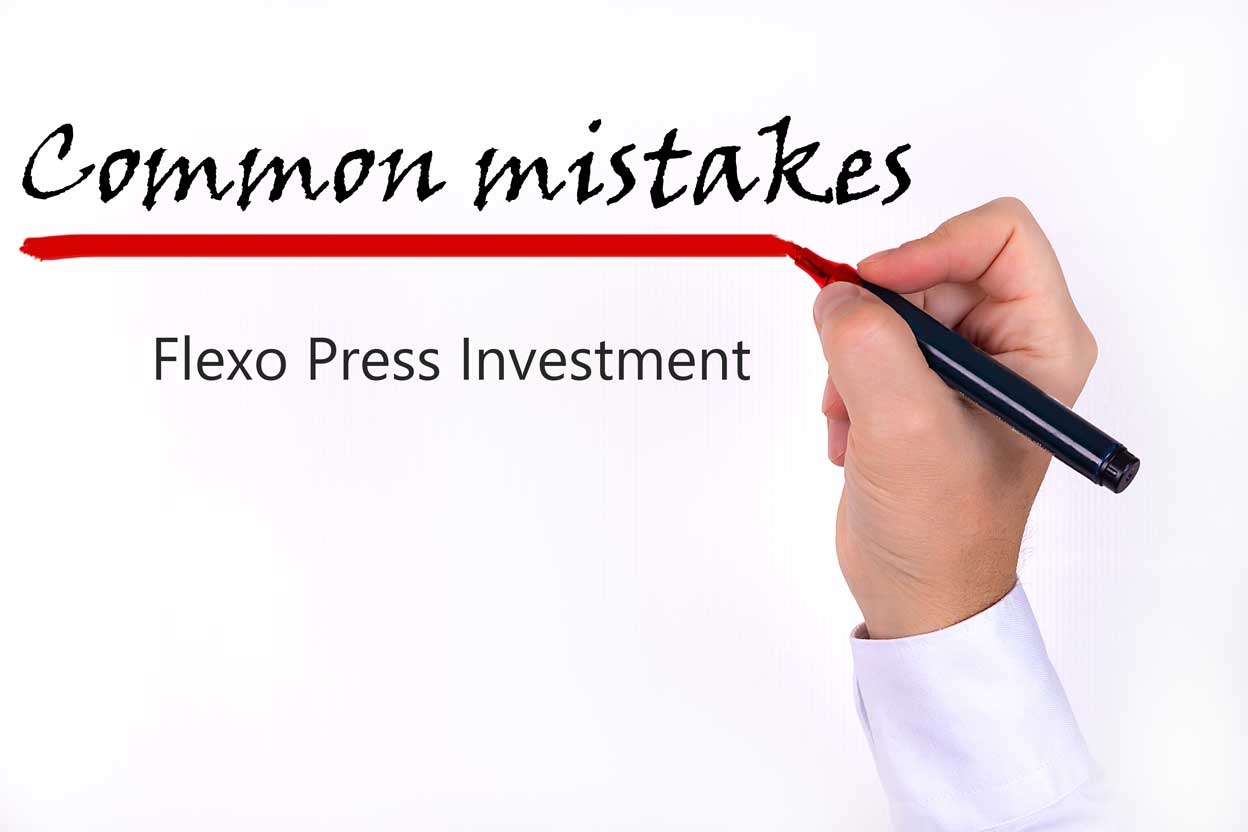5 mistakes to avoid when buying flexographic printing press

Buying a flexographic printing press is a lengthy process. As the price of the press reaches the millions maybe the more appropriate term should be investing instead of buying. Buying something is when you can replace the commodity easily with another. Investing in something is when you are stuck with it in the long term once you have made the decision. The investment of flexographic printing machinery should be a major process for each company and should be taken with great care. A good investment will leverage a company’s market competitiveness. A bad investment will develop into a headache. The aim of this article is to point out the commonly made mistakes and to help you make the right decision.
Over equipped with surplus functions and features
For the ones with surplus cash, it may be tempting to go for the highest price. To add all the latest technologies into the press. However, at the end of the day, one should ask himself, “Do the features add value to the process?” The flexographic press should be considered as a part of the production process and not as an independent station. For an in-line setup between a flexographic press and an extruder. Even when the flexographic press is capable of running up to 800 meters per minute, what good does it do when the extrusion process can only run at one-third of the speed?
Going back to the current sales order is always recommended. If one is printing a logo on a cheap supermarket plastic bag, then he probably doesn’t need all the automation on the registration control and impression control. He probably doesn’t need the servo drive to give him the tightest registration. If one’s job requires him to uses one to two colors, then probably investing in an 8-color press is not such a good idea.
The process of choosing the right press is a balance between one’s budget and needs. What types of jobs are the company taking on right now, and what jobs does the company expect to obtain in the future? If the company is expecting print jobs that require higher machine specifications within the next five years, then go ahead and equip the company with machines that contain more advanced features. Otherwise equipping with surplus functions and features is really not adding value to the process. In some instances, it does more harm than good as these surplus features will require maintenance. This means more cost and time wasted.
Choosing brand over a machine that fits your need
The brand is important. When the brand stands for something positive, it is always tempting to go for the brand as it saves one the effort and liability. This is especially true when the printer lacks the capability to evaluate the machine specification and functionality. In large corporations with surplus cash, going after the big brand means less liability for procurement. However, if taking one step back to ask ourselves the question “How much does the brand name worth?” One will be in a better position to choose a machine that matches the company’s needs. Some business will purchase a press from a well-known brand, then to modify the production process according to the capabilities of the press. This is strongly discouraged. The press chosen should be the one that most suits one’s current process. The top priority of selecting a press should be to ensure that it can print at one's required quality. This is not to discourage one from investing in a well-known brand, but to stress the importance of looking into the specification and functionality of the press. To make an evaluation and decision based on comprehensive sets of metrics and not merely on the brand name.
Going for a bargain press
With an investment as large as a new printing press, there is nothing wrong with wanting to save some money. As we are not talking about a few hundred dollars of savings but a few hundred thousand dollars of savings. However, going for the lowest possible price on the market is not advisable. A short-term spending can turn into a long-term money consuming disaster. The machine can be cheaper for many different reasons. If the machine is cheaper due to lower quality, the long-term spending on maintenance and service can quickly add up. Not to mention the negative impact from the production line delay or even a shutdown and the bad company reputation cost. It is strongly advised to look at the cost of the machine over its total lifespan, and not simply on the initial investment.
Neglecting the aftersales service
Getting one’s hand on a newly invested machine is only part of the story. At the end of the day, to get the machine to operate smoothly in production is what really matters. Old part replacement, regular maintenance, troubleshooting, onsite support, and operator training are all part of the aftersales service. Good aftersales service can really make a difference to a company’s production. Therefore, ask for the aftersales service that is included and agree on a service level. For instance, the maximum time it will take to get feedback from the vendor’s customer support, how the customer support should be conducted, the training materials and hours that will be provided…etc. To write these service level agreements down on the contract to prevent future disputes.
Putting the press into service too soon without proper training and testing
The flexographic printing machine can be quite sophisticated. It is far more complicated than using a remote control to turn on a TV. It can be quite complicated because in order to operate the press, not only does the operator needs to understand the functionality of the machine but to have a comprehensive understanding of how to get different components to work together. For instance, how to pair up the anilox with the plate according to the different LPI and BCM. At what thickness should the printing plate be at. What type of tape (soft, normal, hard) to select for print? The viscosity level of the ink that is needed for the operational speed. Each machine will have a slight variation. Therefore, it is important to conduct a fingerprint test for each machine. One should make sure that proper training and testing are put into place before the machine becomes fully operational to prevent negative impacts such as machine damage and unnecessary waste.
Avoid the 5 mistakes mentioned above when buying flexographic printing press to save the company time and money

Article by Daywey Chen, KYMC


























